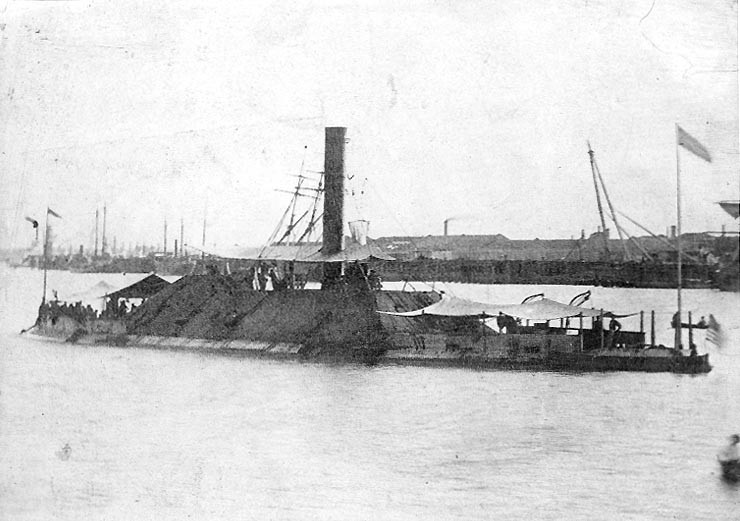What is old is new again. Who would have thought that John C. Calhoun, in spite of having his named purged from a school, would be the most influential thinker in the liberal West? Yet nullification (okay, they call it resistance) and even secession (Calexit) are the issues of the day.
It even extends to warship design. Here is the newest Navy warship, the U.S.S. Omaha.

Compare with the C.S.S. (later U.S.S.) Tennessee in 1864.

Get rid of the stack and it’d probably be pretty stealthy today.
Martin Pegler, whose interest runs to sharpshooters and snipers, sends along a link to the Gettysburg NMP blog about the identity of the Confederate soldier in Alexander Gardner’s famous photo “A Sharpshooter’s Last Sleep.” Although it’s been pretty much established that the soldier was not a sharpshooter but an ordinary infantryman dragged there to model for Gardner, there has been a good deal of discussion of his identity. The latest, which seems quite convincing, is that he was a Georgian from “Rock” Bennings brigade.
UPDATE: Lord Edward Cornwallis is the latest subject of Historical Cleansing. Canadians seem to have much less attachment to their history than we do, especially when it offends against the pieties of the PC present. Cornwallis stands accused of offering a bounty on Indian scalps, which seemed to have been ineffective, but to be fair he also acted brutally toward the Scots Highlanders after the Jacobite Rebellion in 1745. Nor, it seems was the wave of vandalism against his statue the first mob action against him. After his return from Minorca with Admiral Byng (who was eventually court martialed and executed) “a large, unruly mob attacked the officers as they left their ships in Portsmouth and later burned effigies of Cornwallis and the other officers.” He seems to have been a polarizing figure in life as well as in death.
Africatown, which I mentioned previously, is now embroiled in a controversy about environmental pollution from various nearby industries. Once a fairly isolated location, it is now being rapidly developed.
An interesting article by a serving U.S. Army officer, Captain Nathan Jennings, on the uses of the long-range cavalry raid against the Indians in the 1850s. One of its most successful practitioners was one Captain Earl Van Dorn, who would go on to do it on a much larger scale in the Civil War.

Leave a Reply